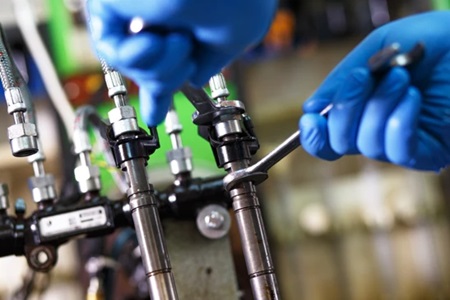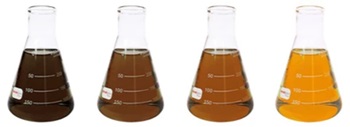If your standby generator is vital to your organization’s safety and compliance systems, no amount of downtime is acceptable. But keeping it reliable takes more than engine maintenance. If you neglect the fuel source, you risk unexpected and costly failures. Diesel fuel, commonly used to power off-the-grid standby generators, doesn’t last forever. Without proper care, it can break down and cause problems when you need power the most.
Here’s what you need to know about maintaining diesel fuel and how to ensure your generator is always ready to perform.
” Diesel fuel begins to degrade within six months of storage and may become unusable after two years. To avoid costly downtime or safety risks, proactive fuel management is essential. “
Diesel Fuel Has a Limited Shelf Life
Over time, the diesel stored in your generator’s fuel tank will naturally deteriorate, leading to a host of potential problems:
- Water Contamination: Condensation forms on the exposed surfaces inside fuel tanks, particularly during temperature fluctuations. This water settles at the bottom of the tank and becomes a breeding ground for microorganisms.
- Sludge and Microorganisms: Algae, bacteria, and fungi can develop in the water layer and spread throughout the tank, clogging filters and damaging your engine.
- Sediment Accumulation: Over time, dirt and other particulates build up, further contaminating the fuel.
Diesel fuel begins to degrade within six months of storage and may become unusable after two years. To avoid costly downtime or safety risks, proactive fuel management is essential.
Fuel Quality Isn’t Guaranteed
Engine manufacturers recommend ASTM-grade diesel fuel to ensure optimal generator performance. However, neither engine manufacturers nor fuel dealers guarantee this grade of fuel quality—it’s up to you, the end-user, to maintain it. Poor-quality fuel can lead to safety risks, engine damage, and non-compliance with regulations.
The good news? Our simple, three-step approach can keep your fuel, and in turn your generator in peak condition.

The CJG Three-step Approach to Diesel Fuel Maintenance
Step 1: Treat Your Fuel
Proper fuel treatment is your first line of defense. Regularly treating your diesel fuel with additives offers several benefits:
- Stabilizes Fuel: Saves environmental waste and expense by slowing fuel degradation over time.
- Adds Lubrication: Reduces wear and tear on engine components.
- Fights Algae Growth: Creates a hostile environment where microorganisms can’t survive.
- Prevents Gelling: Keeps fuel fluid in colder temperatures without block heaters.
- Boosts Cetane Levels: Improves combustion efficiency.
Fuel treatment is an easy, cost-effective way to extend the life of your diesel and protect your generator from fuel-related failures.
Step 2: Test Your Fuel
Annual fuel testing isn’t just a recommendation—it’s a requirement under NFPA 110, the fire safety standard for emergency and standby power systems. Testing your fuel ensures it meets quality standards and identifies potential issues before they cause problems.
During a fuel analysis, our technicians check for:
- Water Contamination: Indicates condensation or leaks.
- Microorganisms: Detects if bacteria, fungi, or algae are present.
- Gel and Cloud Points: Ensures the fuel remains usable in colder temperatures.
- Cetane Levels and Flash Points: Verifies combustion efficiency and safety.
- Rust, Sludge, and Sediment: Gives evidence of tank deterioration or aging fuel.
With 80% of generator failures linked to fuel issues, regular testing is crucial to thwart problems before they thwart your generator’s operation when it is critically needed.
Step 3: Polish Your Fuel
If the previous step reveals a problem, there is a solution other than entirely replacing your diesel. Fuel polishing can restore quality, providing a far more environmentally friendly and cost-effective alternative to replacement.
Our fuel polishing process:
- Removes water, eliminating the breeding ground for algae and bacteria.
- Filters out contaminants like sediment, rust, and sludge.
- Sustains quality by promoting tank integrity.
Polishing complements other maintenance steps to ensure your system’s overall reliability.
Keep Your Organization Running
When maintaining compliance with safety standards and ensuring operational continuity are top priorities, your generator maintenance should be comprehensive. By treating, testing, and polishing your diesel fuel regularly, you can protect your standby power investment and guarantee your generator performs on demand every time.
Have questions or need assistance with diesel fuel maintenance? Contact us today for expert advice and services tailored to your business.

Leave a Reply
You must be logged in to post a comment.